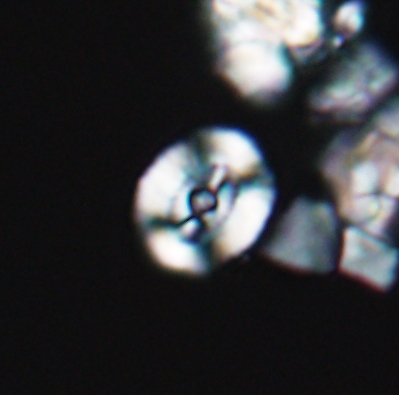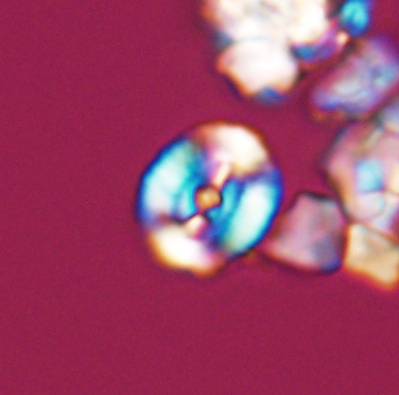Ellipsagelosphaera supergestus
Set number: 26
-
1
-
2
-
3
-
4
-
5
-
6
-
7
-
8
10µm
Set number: 24
-
1
-
2
-
3
-
4
-
5
-
6
10µm
Set number: 25
-
1
-
2
-
3
-
4
-
5
-
6
10µm
Set number: 27
-
1
-
2
-
3
-
4
-
5
-
6
-
7
10µm
Holotype
Ellipsagelosphaera supergesta Varol & Bowman, 2019
1996 Ellipsagelosphaera britannica (Stradner 1963) Reinhardt 1964. – Gale et al., fig. 6n.
1999 Ellipsagelosphaera britannica (Stradner, 1963) Reinhardt, 1964 – Aguirre-Urreta et al., fig. 4.4.
2003 Watznaueria communis Reinhardt 1964 – Kessels et al.; fig. 4.9–10
2009 Ellipsagelosphaera britannica morphotype E (Stradner 1963) Reinhardt 1964. – Giraud et al., fig. 4.18.
2010 Ellipsagelosphaera britannica (Stradner 1963) Reinhardt 1964. – Tiraboshi & Erba, fig. 5.1; non fig. 5.3.
Medium-sized (< 10 μm) elliptical species of Ellipsagelosphaera having a very narrow central opening blocked by a very short bar.
From Latin supergesta, plugged – referring to a bar that plugs the central area.
Length = 7.20 μm; width = 5.90 μm; diameter (central area) = 1.21 μm.
The elliptical placolith comprises single-tiered distal and proximal shields, a double tube cycle and a narrow central area blocked by a disjunct traverse bar. Except for the outer tube cycle, all parts exhibit inclined extinction lines and length-fast (-) elongation in the plan view. The outer tube cycle shows constant extinction because the optic is vertical relative to the microscope stage in the plan view. The extinction angle is about
67°, but it can not be measured in the tube cycle due to the oblique orientation of the tube cycle segments. The apparent angle between extinction on the tube cycle is 73°, corresponding to an obliquity angle of 17°.
Ellipsagelosphaera supergesta is distinguished from Ellipsagelosphaera clausa by being smaller than 10.0μm with first-order white interference colours rather than first-order yellow interference colours of Ellipsagelosphaera clausa.
It is distinguished from Ellipsagelosphaera britannica and Ellipsagelosphaera lucasi by having a very narrow central area entirely blocked by a traverse bar, whereas the latter species has an open central area on either side of the traverse bar.
The abundance pattern of Ellipsagelosphaera supergesta differs from that of Ellipsagelosphaera britannica and Ellipsagelosphaera lucasi.
Aguirre-Urreta, M. B., Concheyro, A., Lorenzo, M., Ottone, E. G. & Rawson, P. F. 1999. Advances in the biostratigraphy of the Agrio Formation (Lower Cretaceous) of the Neuque’n Basin, Argentina: ammonites, palynomorphs, and calcareous nannofossils. Palaeogeogr. Palaeoclimatol. Palaeoecol., 150: 33–47.
Gale, A. S., Kennedy, W. J., Burnett, J. A., Caron, M. & Kidd, B. E. 1996. The Late Albian to Early Cenomanian succession at Mont Risou, near Rosans (Drôme, SE France): an integrated study (ammonites, inoceramids, planktonic foraminifera, nannofossils, oxygen and carbon isotopes). Cretac. Res., 17: 515–606.
Kessels, K., Mutterlose, J. & Ruffell, A. 2003. Calcareous nannofossils from late Jurassic sediments of the Volga Basin (Russian Platform): evidence for productivity-controlled black shale deposition. Int. J. Earth Sci., 92: 743–757.
Reinhardt, P. 1964. Einige Kalkflagellaten-Gattungen (Coccolithophoriden, Coccolithineen) aus dem Mesozoikum Deutschlands. - Monatsberichteder Deutschen Akademieder Wissenschaftenzu Berlin. 6: 749-759.
Stradner, H. 1963. New contributions to Mesozoic stratigraphy by means of nannofossils. Proceedings of the Sixth World Petroleum Congress. Section 1 Paper 4: 167-183.
Tiraboschi, D. & Erba, E. 2010. Calcareous nannofossil biostratigraphy (Upper Bajocian–Lower Bathonian) of the Ravin du Bès section (Bas Auran, Subalpine Basin, SE France): Evolutionary trends of Watznaueria barnesiae and new findings of “Rucinolithus” morphotypes. –Geobios, 43: 59–76.
Varol, O. & Bowman, A.R. 2019. Taxonomic revision of selected Late Jurassic (Tithonian) calcareous nannofossils and the application of mobile mounting. Neues Jahrbuch für Geologie und Paläontologie, Abhandlungen. 291/1 (2019): 1–23

